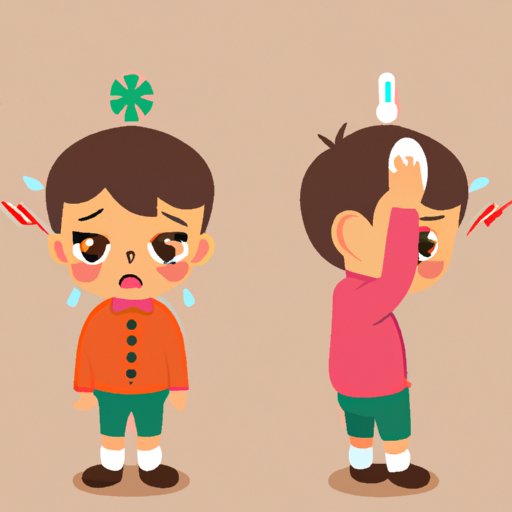
I. Introduction
Do you know how to tell if you have a fever? A fever is a common symptom of many illnesses, including colds, flu, and COVID-19. It’s important to know if you have a fever because it can indicate if your body is fighting off an infection. In this article, we’ll cover the different ways to check for a fever, common symptoms, when to see a doctor, causes and risks, and natural remedies that can help relieve fever symptoms.
II. Different Ways to Check for a Fever
The most common methods for measuring body temperature are using a thermometer or feeling the skin. A thermometer is the most accurate way to check for a fever. There are several types of thermometers: oral, rectal, ear, and forehead. Each method has its advantages and disadvantages. For example, a rectal thermometer is the most accurate, but it can be uncomfortable. Ear and forehead thermometers are easy to use, but there can be variations in readings depending on the type of thermometer and how it is used.
III. Common Symptoms of Fever
The typical signs and symptoms associated with a fever include chills, fatigue, muscle aches, headache, and sweating. Recognizing these symptoms can help you determine if you have a fever. It’s important to note that not everyone with a fever will have all of these symptoms.
IV. When to See a Doctor for Fever
A fever alone is not usually a cause for concern. However, a fever may require medical attention if it is very high (over 103°F), persistent (lasting more than 3-4 days), or accompanied by other symptoms such as severe headache, chest pain, difficulty breathing, or a rash. If you have any concerns about your fever, it’s always best to consult with a doctor.
V. Causes and Risks of Fever
The most common causes of fever are infections, such as colds, flu, and COVID-19. Other causes include immune system disorders, underlying health conditions, and medications. The risks associated with each cause can vary. For example, a fever caused by an infection may be more likely to spread to others, while a fever caused by an immune system disorder may indicate a more serious underlying condition. It’s important to identify the cause of a fever to determine the best course of treatment.
VI. Natural Remedies for Fever
In addition to medical treatments, there are also natural remedies that can help relieve fever symptoms. These remedies include getting rest, staying hydrated, taking over-the-counter medications such as acetaminophen or ibuprofen, and using herbal remedies such as ginger tea or echinacea. It’s important to note that not all natural remedies are safe or effective for everyone. It’s always best to consult with a doctor before trying any new remedies.
VII. Conclusion
In conclusion, knowing how to tell if you have a fever is important for maintaining your health. By checking for fever using a thermometer or feeling the skin, recognizing common symptoms of fever, knowing when to see a doctor, understanding the causes and risks, and trying natural remedies, you can effectively manage and treat your fever. Remember to always consult with a doctor if you have any concerns about your health.




